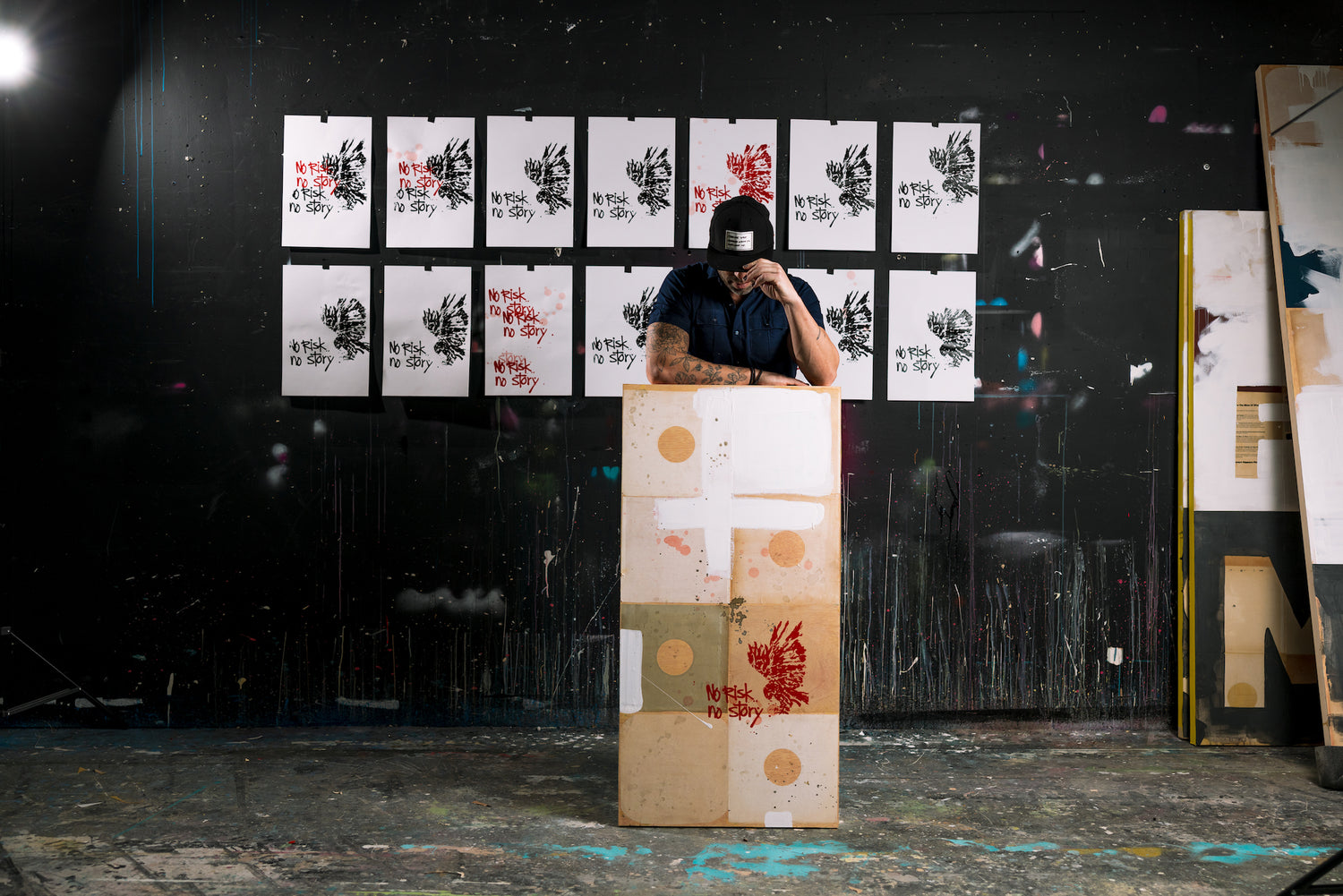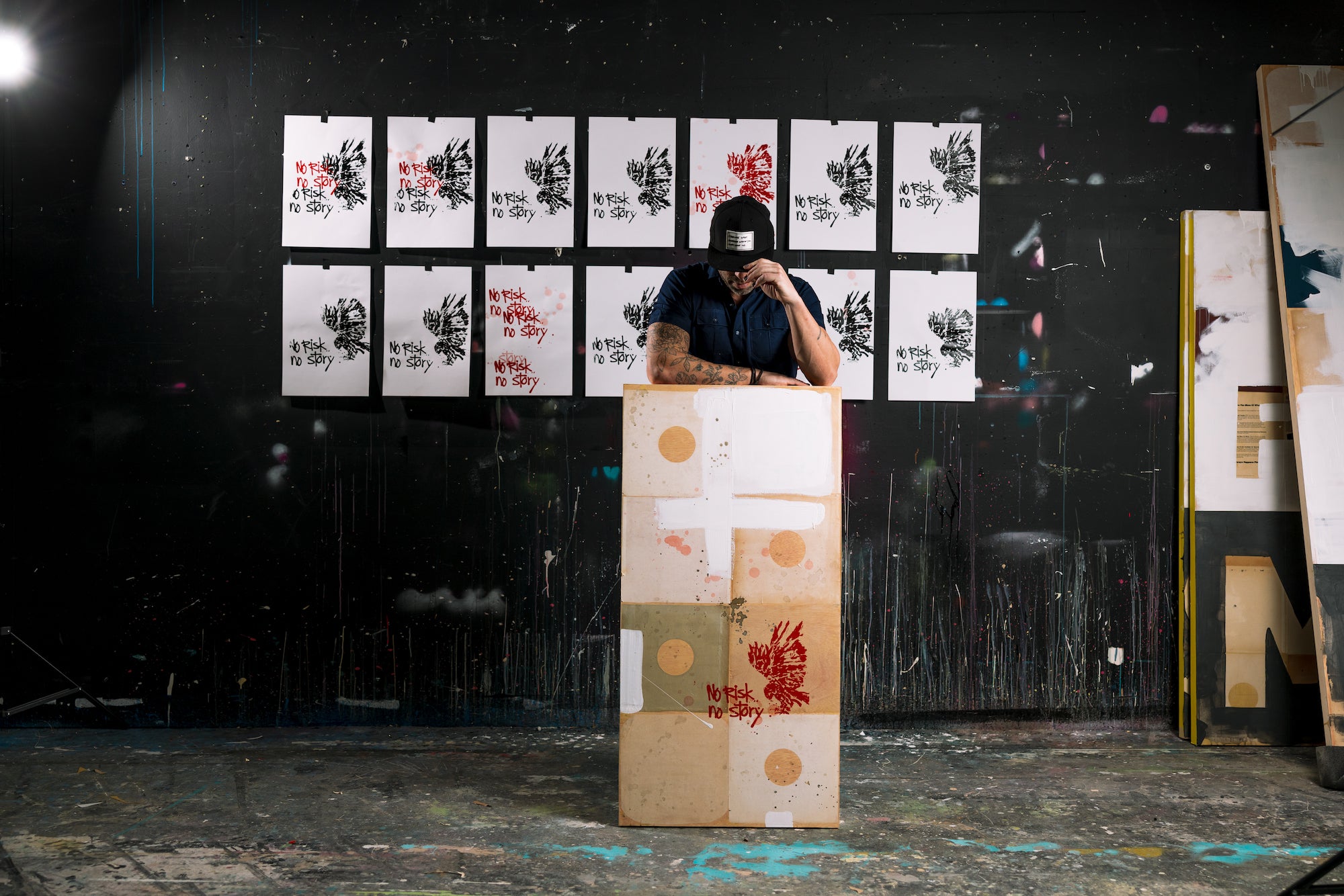A large vending machine. A female polar bear. Five of those heavy-duty chain links used to anchor cruise ships. Whatever method you use to measure its equivalence, Sam Dancer’s 655-pound deadlift is, you know, decent.
“I was made a little different,” he laughs. “My body was built to carry heavy things.”
Obviously, he’s got some beef. Sam can snatch a cool 245 pounds (that’s about 125 medium-sized apples) with a sleek man-bun to boot. Sidenote: Sam’s got great buns.
I thought it swell, then, listening to Sam explain that his collegiate football experience at Western Illinois was complemented by none other than a general art degree. While he dabbled in oodles of artistic doodles, one medium regularly hit #1:
Sam loves throwing pottery.
I imagined the bulk of Sam’s physique bent over a potter’s wheel, a Greek god’s doppelganger, his hands muddy with wet clay, tenderly shaping and sculpting the pieces that pepper his home today. Careful and precise, NoBull in a china shop.
Traditionally, Sam explains, throwing pottery begins with wedging a lump of clay, a technique designed to benefit the clay and ensure a uniform consistency. Like kneading dough, wedging pushes air bubbles out of the clay, aligning particles of the clay more closely together. Wedging the clay rids it of the memory embedded in those particles, making it more pliable and malleable, more easily worked with.
“I would always make sure I took my time to really work the clay,” Sam says. “The problem I saw is that people would always rush the wedging process because they were so eager to get to the wheel.” If the clay isn’t worked properly, potters run the risk that their clay will crack, warp, or explode in the kiln. Boom.
Wedging clay can prove physically demanding on wrists and joints; consequently, potters wedge smaller gobs of clay, as minimal as three to five pounds.
Sam, if you remember, is built a little differently.
One Icelandic Sheepdog. Thirty boxes of butter. Two bowling balls. All equivalent to Sam’s 35-pound hunk of wedgeable clay.
Thirty-five pounds. The physical demands placed on a body responsible for wedging a clay block the mass of a cinder block is a feat saved for, well, Sam. The intense, whole-body manipulation and strength required for such a bulk could bench a potter. Just imagine kneading cinder-block-laden dough.
Sam would work the behemoth clay clod over and over, repeating this laborious step until the clay no longer held its original shape. Push. Fold. Repeat. Push. Fold. Repeat.
“You can feel when the memory is gone. It’s hard to explain, but the clay is telling you, ‘I’m ready to be worked with,’” he finished.
After the clay was pliable and uniform, Sam would haul his clay slab over to the pottery wheel to be centered, a pivotal step in constructing a ceramic piece. Using (a lot of) bodily force and (a lot of) core muscles, a potter must evenly distribute the clay on the wheel. If the clay is not centered correctly, the centrifugal force of a speedy pottery wheel can sling a three-to-five-pound hunk of clay right in the kisser. Ouch.
And a 35-pound hunk of clay…?
“Centering was my favorite part that no one else even attempted to do,” says Sam, a cheeky grin across his face. (Seriously, are his eyes twinkling?) Sam, in his need for a challenge, would use his massive stature to center his mud, which often required some creativity.
“I would have to stand on a chair to complete the centering and use my entire body to push into this heavy mass,” he laughs, nostalgia tinging the air. I hear his pride in his tenacity at breaking yet another invisible barrier. He has, after all, built clay mountains with his hands. Once the clay was centered, the bulk of his work was done. Vases, jars, jugs—the end results could now be shaped and pulled, crafted from the humbled clay.
Sam’s love of centering clay parallels his own story. Centering demands discipline, strength, and a high work ethic, and Sam roots himself in these pillars of self-mastery. With a respect for his body that borders on reverence, Sam captains himself in fierceness and intensity. He pushes to dispel limitations, break through barriers, and tear down fences. He’s comfortable with success, yet he is also well-versed in failure, in the risks associated with pushing his body to a level unsurpassed. Sam thrives in this world; however, the challenges he seeks present their own, well, challenges.
“It’s an addiction,” he says. “To a fault, sometimes! I am addicted to the challenge, to pushing limits. Proving people wrong is a huge motivator for me. If someone tells me it can’t be done, I can’t help myself. I have to do it.”
On occasion, pieces of pottery crumple on the wheel, requiring a re-do. What doesn’t, at times, need a second, third, or fourth chance? Sam ascribes to the dogma of re-dos, allowing himself the grace to learn, grow, and re-dedicate himself to perpetual improvement.
“Listen!” Sam wrote in a recent Instagram post, his voice clear and resilient over the blah-blah-blahs of naysayers, “Every single year for the rest of my life, I will do everything in my power to help myself and those around me peak mentally, physically, spiritually, and relationally. Sometimes, I fall short, and sometimes, I overshoot, but it is what it is. I will learn my lessons and make necessary adjustments, but I’m sure as hell NOT STOPPING!”
Sam controls the clay, and yet, in the hands of the Messianic potter, is the clay, strong, humble, and workable. Who he becomes, in the end, isn’t the point or purpose of his master(’s) plan; instead, Sam seeks to figure out the unfigureoutable.
Here’s hoping Sam goes full send on his next deadlift—six links this time.
No risk, no story.
-written by @kierabrynne


